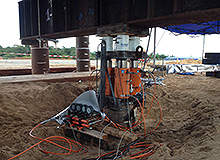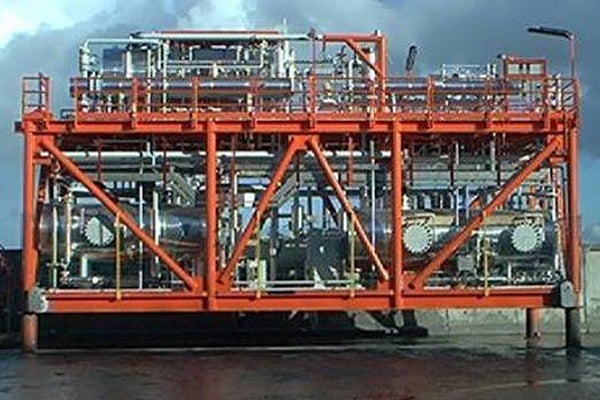

Staatsolie Maatschappij Suriname began construction works on the expansion of its Tout Lui Faut Refinery, located 20km south of Paramaribo, the capital city of Suriname, in February 2012.
The expanded refinery’s vacuum distillation unit became operational in December 2014, while the facility was fully commissioned in December 2015.
The refinery achieved a production milestone of one million barrels of premium diesel and gasoline in August 2016.
Tout Lui Faut Refinery originally opened in 1997 and consists of a vacuum distillation unit and a visbreaker unit with a processing capacity of 7,000 barrels a day of diesel and fuel oil.
The new facilities added during the expansion have increased the processing capacity to 16,177 barrels a day of diesel (EURO IV type), fuel oil and asphalt bitumen for the local market and sulphuric acid for export by the first half of 2017.
Tout Lui Faut Refinery exclusively uses drilled crude from the Saramacca District.
The project was implemented with the intention of allow Suriname to be completely self-sufficient in its production and usage of engine fuels.
Tout Lui Faut background and expansion financing
The refinery expansion project was originally planned in 2002. Two Front End Design (FED) phases were carried out from 2002 to 2007.
The final design for the expansion was carried out by the Chicago Bridge & Iron Company (CB&I) subsidiary CB&I Lummus, which also designed and built the existing refinery.
The embankment of the project site, featuring 2.5m of river sand, as well as construction of a jetty along the adjacent Suriname River and placement of the supports for the new storage tanks were all carried out by Boskalis International prior to the commencement of the main construction works.
Staatsolie Maatschappij Suriname provided funding for approximately 75% of the $1bn expansion project, while $275m was borrowed from ING, Credit Suisse and other regional banks.
Local bonds worth roughly A$55m were also issued in support of the project.
Related project
Mangalore Refinery Expansion, India
Mangalore Refinery and Petrochemicals Limited (MRPL) is located in the city of Mangalore about 350km from Bangalore in the state of Karnataka, India.
Staatsolie Suriname refinery expansion details
The Staatsolie Refinery Expansion Project (REP) is built on a nine-hectare area located east of the existing refinery.
Staatsolie ordered approximately 600 custom-made components for use during the project from manufacturers situated worldwide.
A 700t hydrocracker reactor produces diesel oil, while an 180t vacuum tower is used as the feeding module.
The two facilities were shipped to the project site in March 2013.
The new refinery is equipped with Hitachi’s Tribune compressors. The Hydrogen compressors used for the gasoline units were constructed by Dresser Rand.
A Pressure Swing Adsorption (PSA) unit was installed in February 2013 for purifying hydrogen from the hydrogen production unit.
The PSA unit consists of a large vessel measuring 22m in height and four metres in diameter, which weighs approximately 30t.
It also comprises six smaller vessels weighing 18t, and measuring eight metres in height and 2.4m in diameter.
The 27m-high valve skid for the vessels weighs approximately 30t and measures four metres in diameter.
Other support facilities such as a wastewater treatment plant, thermo-physical deaerator, pipe racks, storage tanks and fuel package boilers were constructed as part of the refinery expansion initiative.
The wastewater treatment plant and thermo-physical deaerator possess hourly flowrates of 102m3 and 82t respectively.
The two fire tube heavy fuel package boilers produce 12t of steam an hour at a temperature of 260°C.
A total of 373 steel piles and 13.5m-tall pipe racks were installed at the project site.
Eleven storage tanks and two water tanks were also constructed as part of the project.
Contractors involved with the South American Refinery Expansion Project (REP)
Saipem was awarded the $424m engineering, procurement and construction (EPC) contract for the refinery expansion project in September 2009.
A joint venture (JV) comprising IREM and SICES provided the mechanical contractor for the project.
The JV installed the first pipe racks for the project in October 2012.
SICES constructed 24 package plants under a €27m ($36.68m) deal awarded in January 2012.
The hydrocracker reactor and vacuum tower for the project were manufactured by Larsen & Toubro.
The initial Project Management Consultancy (PMC) contract for the project’s design phase was awarded to Aker Solutions.
Bono Artes has been contracted to construct the wastewater treatment plant and thermo-physical deaerator, while the two fire tube heavy fuel package boilers were supplied by Bono Energia.
Skema provided design, manufacturing, inspection and testing services for the switchboards and all the electrical control and monitoring systems (ECMS).
Ballast Nedam performed the civil and steel piling works under a €25m ($33.96m) contract originally awarded in January 2012.
Honeywell installed its Integrated Control and Safety System (ICSS) and Manufacturing Execution System (MES) at the refinery.
Techimp Impianti performed the electrical and instrumentation works for the expansion project.




